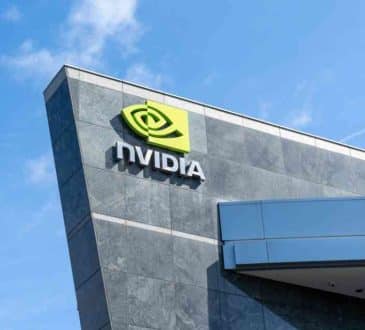Essential Tips for Keeping Company Data Secure in the Workplace

Cybercrimes are a type of crime that is just as harmful in the online world as it is in the physical one. Personal property theft, fraud, and bribery are common cybercrime activities. The distinction is that with cybercrimes, the victim can be found anywhere on the planet: Cybercriminals utilize the internet to commit felonies such as identity theft and terrorist recruitment. Cybercrime has an enormous economic cost; according to a World Economic Forum (WEF) publication, businesses and organizations lost $600 billion in 2018 due to global scale cybercrime. The media devote a lot of attention to high-profile data breaches, but small businesses are also victims of cybercrime. In fact, according to a May 2019 WEF research, 58 percent of all cybercrime is aimed at small businesses. What do statistics like these suggest? They reveal the breadth and extent of cybercrime and provide the groundwork for educational programs on cybersecurity at work.
Cybersecurity is a critical part of protecting your business data. In order to keep your company’s data safe, it is important to be aware of the primary risks associated with cybercrime. One such risk is ransomware, which can render a computer or network inaccessible until a ransom is paid. Another common threat is phishing, which tricks users into revealing personal information or installing malware on their systems. A data clean room can help protect your company from these and other cybersecurity threats by providing a secure environment for storing and processing sensitive data. A SaaS license allows you to use software as a service, which can help keep your business’s data safe and secure.
Every company is in the cybersecurity business, whether they like it or not. Cybersecurity has become an essential expense of doing business. In today’s digital world, companies that embrace cybersecurity as a core strategy are in the best position to defend themselves against cyber threats. At the bare minimum, firms should understand which types of cyberattacks might have a negative impact on their performance and implement appropriate cybersecurity precautions.
Cybersecurity Protection Measures
Cybercrime can affect companies in nearly every sector, including financial services. Cyberattacks cost businesses 4 million times a year in the United States, according to the Federal Communication Commission (FCC). Financial services firms, on the other hand, are 300 times more likely to be attacked than those in other sectors: 1 billion attacks each year, according to the FCC.
The most prevalent type of fraud in business today is cybertheft, or the theft of digital information, which accounts for more than physical theft, according to the FCC. A cybertheft attack might result in the theft of passwords, personal data, financial information, and other items. Companies can protect their business assets both digitally and physically by using proper website maintenance and network infrastructure management.
A few crucial steps are required to get started on cybersecurity 101
Make sure the website host site you’re considering is verified and trustworthy.
Create e-commerce stores that are safe to use with secure e-commerce platforms.
Install firewalls on all of your computers.
Change passwords on computers and other devices regularly.
Ensure that computers and devices are up to date with the most recent software upgrades.
Invest in anti-virus software and similar technology.
It’s true that security training is more than just procedures and tools, but it’s crucial to recognize that it necessitates employee and vendor engagement as well. This entails following the company’s cybersecurity rules in order to foster a safety and security culture. A frequent blunder among businesses and organizations is to believe that defending against cybercrime is the responsibility of a team of competent cybersecurity experts. Because every company or organization is a target of cybercrime — and because everyone in it, from owners to salespeople to marketing and accounting employees, as well as legal teams, should be aware of how to safeguard the business and its assets.
What Every Employee Should Know About Cybersecurity: Best Practices for Businesses
The city of Baltimore was nearly shut down for almost a month after a complex cyberattack took out key systems. Typically, cybercriminals gain access to computer systems by using phishing scams. Phishing assaults employ fraudulent methods to trick email consumers into disclosing information, such as passwords and bank account numbers. The Baltimore incident, however, revealed a vulnerability in a government system and used automated software to generate passwords that gave access to critical systems.
The more sophisticated cyberattacks become, the easier it is for criminals to steal vital information and cause business operations to shut down. Education is critical in fighting this issue; according to the US Chamber of Commerce, 47 percent of poll respondents consider employee education as a method for reducing cybersecurity risks. Employees can learn from education. Creating cases to put employees’ cyberthreat knowledge to the test is one method. Examinees this technique may be asked to come up with hypothetical situations that test their understanding of cyber threats, such as finding potential phishing links in their email inboxes. Tests like these assist businesses understand the types of security policies and training they need to assist employees detect and report possible cyber assaults. Small IT teams might use a third-party testing service to facilitate testing.
An annual meeting for all personnel to discuss company safety and security regulations is another good approach. Employees need to know how a company’s property and sensitive data should be protected; for example, a policy may dictate the appropriate usage of laptops in public places and methods for signing into public Wi-Fi hot spots. Policies that must be followed for data security include, but are not limited to, updating software and passwords on a regular basis, keeping it up to date, and backing up data. Clear punishments for data security policy infractions should be established.
Finally, educating employees achieves three objectives: instilling a safety culture into the corporate culture, stressing the significance of remaining vigilant, and raising awareness of possible cyber threats.
Increased Awareness of Cybersecurity Risks
Hackers are very skilled at finding ways around existing security measures, therefore cyber dangers are always developing. Keeping your business’s data safe requires an understanding of the cybersecurity hazards that may affect it. A key component of fundamental cybersecurity is being conscious of the following primary risks.
Denial of Service and Distributed Denial of Service Attack Vulnerabilities
A denial-of-service (DoS) assault renders a website inaccessible to genuine people. A cybercriminal uses a computer to inundate a target website with data in order for it to crash. In addition to webpages, DoS attacks may also disrupt email services, online accounts, and networks. A distributed denial of service (DDoS) attack is one in which many computers or bots are used to attack a website or network simultaneously. A distributed denial-of-service (DDoS) assault is a technique employed by cybercriminals to flood a website or network with many more queries than the server can handle. A successful DDoS attack may result in significant monetary losses for organizations, costing them hundreds of dollars — anywhere from $20,000 to $100,000, according on Stay Safe Online. And when a website goes down, users are inconvenienced, which might cause the company to lose customers.
Ransomware
A discussion of ransomware wouldn’t be complete without talking about a basic element of cybersecurity 101: malware. Malware is computer software that is intended to damage computers and networks. Because a computer virus is a piece of code with the goal of causing harm, it counts as malware. Ransomware is a type of malware in the sense that it is designed for malicious goals, but its aim is more focused. Hackers use ransomware to assault a computer or network with the goal of obtaining money. Ransomware encrypts the hard drive of a computer, taking it hostage. The malware demands payment for an encryption key. Without access to the encryption key, user documents are encrypted and inaccessible.
WannaCrypt, the notorious 2017 ransomware outbreak, was discovered in 250,000 episodes across 116 countries. WannaCry infected Windows computer hard drives and threatened to destroy them unless victims paid a ransom in bitcoin for an encryption key. WannaCrypt’s catastrophic consequences underscore the perils of ransomware for businesses of all sizes.
Phishing
Another type of social engineering is phishing, which involves the delivery or theft of malware or important data from computer users. A phishing attack comes by email or text and appears to be from a respectable source, such as a real business. Phishing attacks are designed to deceive targets into taking a step that exposes their money, such as giving up their bank account number. A successful phishing assault might also allow intruders access to a user’s system with viruses or malware.
Phishing’s origins date back to 1995, when America Online was the most popular internet service provider. Phishing is still going strong nearly 25 years later. According to Accenture’s Ninth Annual Cost of Cybercrime Study, 85 percent of organizations have been targeted by phishing attacks, up from 16% in the previous year.
Have you read?
Why it’s up to leaders to reconnect the disconnect by Rebecca Houghton.
Leadership as the Fossil Fuel for the Next-Age of Sustainable Business Growth? Retail and Consumer Goods Stalwarts think so by Vijay Verma.
Accelerating Leadership Cultures Through the Lanes of Sports Innovation and Team Dynamics: A Must for Corporate Unison by Rhonda Vetere.
The Emotionally Strong Leader: Building Effective And Collaborative Workplace Relationships by Carolyn Stern.
The Coming $60 Trillion Wealth Tsunami by David R. York.
The Five Steps for Having Tough Conversations by Gerard Penna.
Add CEOWORLD magazine to your Google News feed.
Follow CEOWORLD magazine headlines on: Google News, LinkedIn, Twitter, and Facebook.
This report/news/ranking/statistics has been prepared only for general guidance on matters of interest and does not constitute professional advice. You should not act upon the information contained in this publication without obtaining specific professional advice. No representation or warranty (express or implied) is given as to the accuracy or completeness of the information contained in this publication, and, to the extent permitted by law, CEOWORLD magazine does not accept or assume any liability, responsibility or duty of care for any consequences of you or anyone else acting, or refraining to act, in reliance on the information contained in this publication or for any decision based on it.
Copyright 2024 The CEOWORLD magazine. All rights reserved. This material (and any extract from it) must not be copied, redistributed or placed on any website, without CEOWORLD magazine' prior written consent. For media queries, please contact: info@ceoworld.biz
SUBSCRIBE NEWSLETTER









